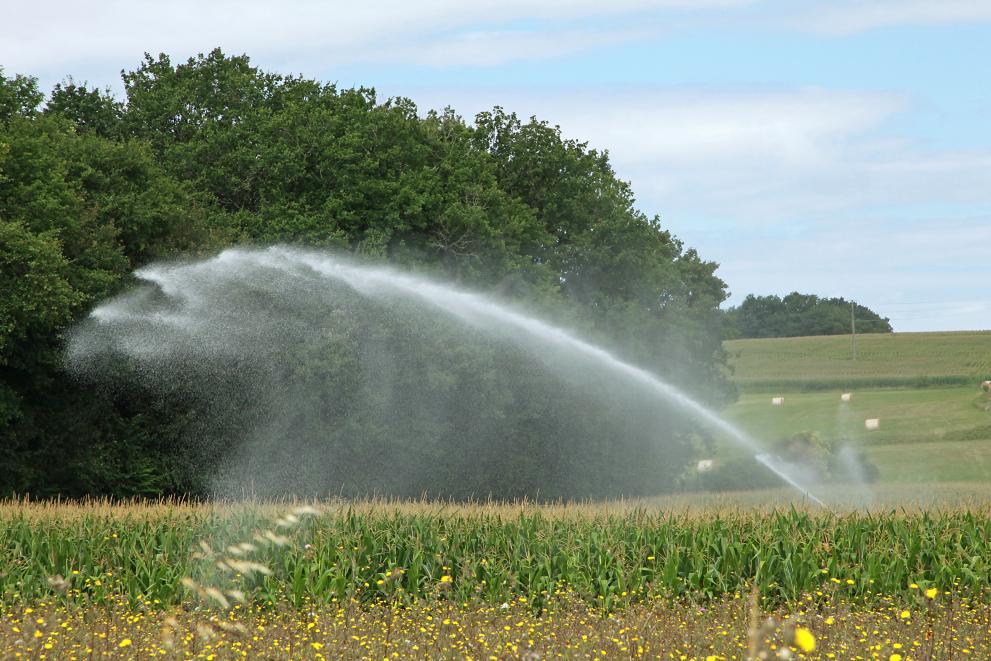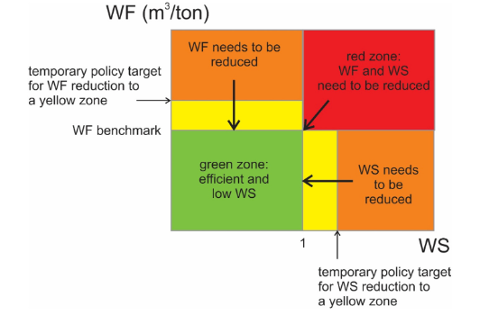
In a recent paper published in the journal Science of the Total Environment, JRC scientists present a new easy-to-use water quantity sustainability scheme based on both water use efficiency and water stress.
This scheme can be used to inform sustainable food system policies and as a basis for food labelling, as both water use efficiency and water stress help measure the sustainability of a product.
Sustainable food systems (SFSs)
Sustainable food systems (SFSs) are high on the political and research agendas.
To remain within planetary boundaries, the increasing global demand for food needs to be met in a sustainable way that respects the environment and helps mitigate climate change.
The recently launched Farm to Fork Strategy of the European Green Deal aims to help address this need, by setting out how to:
- Ensure sustainable primary production;
- Stimulate sustainable food processing, retail, hospitality and food services;
- Promote sustainable food consumption and healthy, sustainable diets;
- Reduce food loss and waste
SFS policies need to consider both pressures and impacts together
In their paper, JRC scientists Davy Vanham and Adrian Leip show that SFS policies need to consider both the environmental pressures imposed by human activities in tandem with their impacts in order to ensure environmental sustainability.
They illustrate this concept by showing how water use (the water footprint, an environmental pressure) and water stress (impact) jointly affect environmental sustainability to varying extents, using the example of global irrigated maize production.
New water quantity sustainability scheme
The new water quantity sustainability scheme presented in the paper addresses both water use and water stress, and shows how these need to be balanced to attain optimal sustainability.

The green zone represents the sustainable, ideal, zone for agricultural products, which have an efficient water footprint (WF) and are produced under low water stress (WS).
The yellow zones are the intermediate zones, which can be set as temporary political targets while trying to revert from the red or orange to the green zone.
This sustainability scheme is in line with the recently published report “Sustainable healthy diets – guiding principles” (FAO and WHO, 2019), which defines sustainable healthy diets as “dietary patterns that promote all dimensions of individuals’ health and wellbeing; have low environmental pressure and impact; are accessible, affordable, safe and equitable; and are culturally acceptable”.
It can be used in support of food system policies, including as a colour-coded communication tool in food package labelling, which is vital if we are to inform citizens on the environmental consequences of their food choice decisions.
It can also be used to support the Sustainable Development Goal (SDG) target 6.4, which aims to substantially reduce the number of people suffering from water scarcity by 2030.
Further information
- Sustainable Food system policies need to address environmental pressures and impacts: the example of water use and water stress.
- Farm to Fork Strategy
- European Green Deal
- Guiding Principles for Sustainable Healthy Diets
- Monitoring our Blue Planet: First SDG indicator platform launched by Google, the JRC and UN Environment
Related Content
Details
- Publication date
- 27 May 2020
